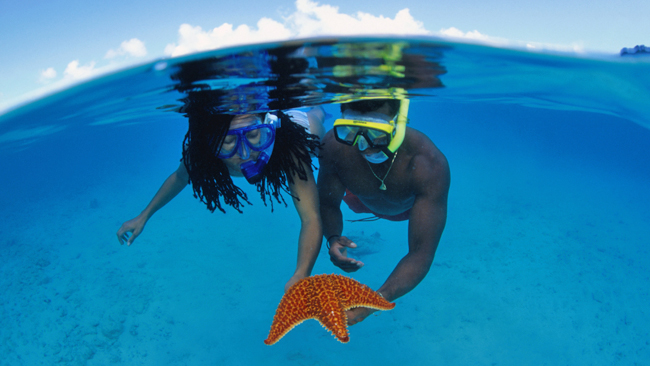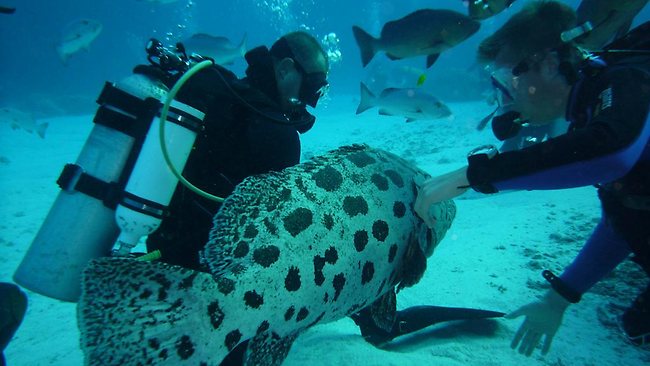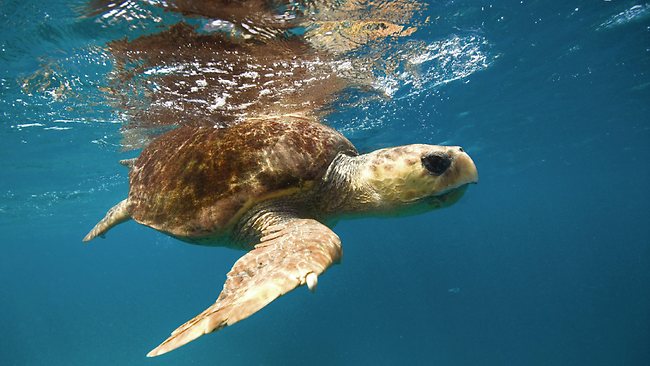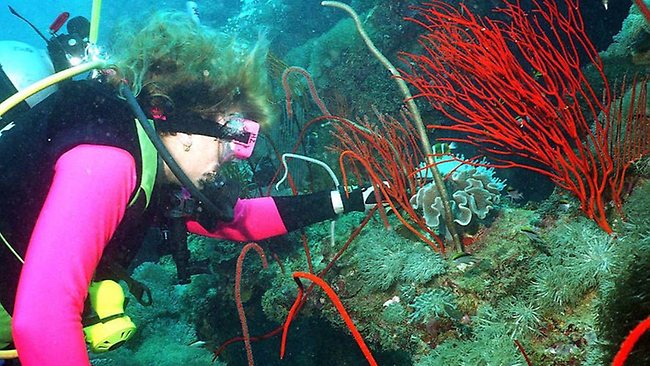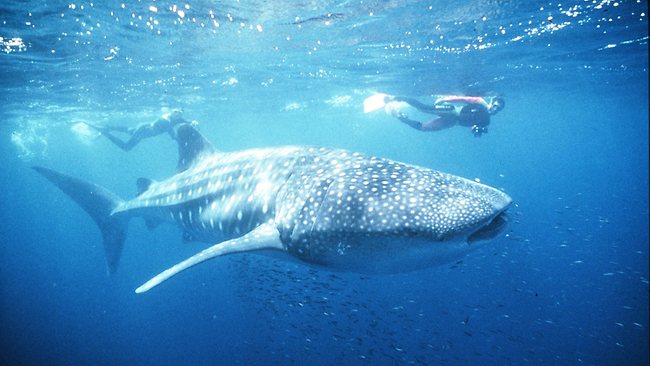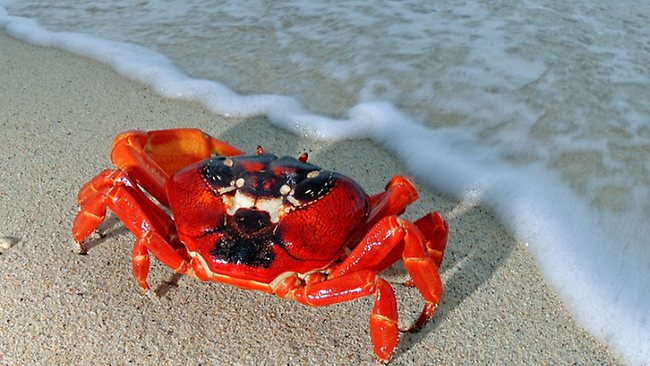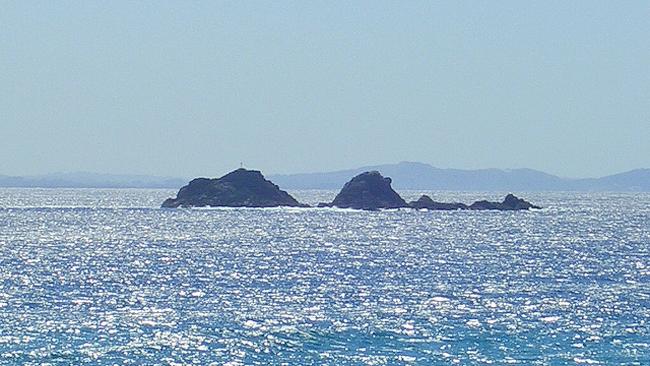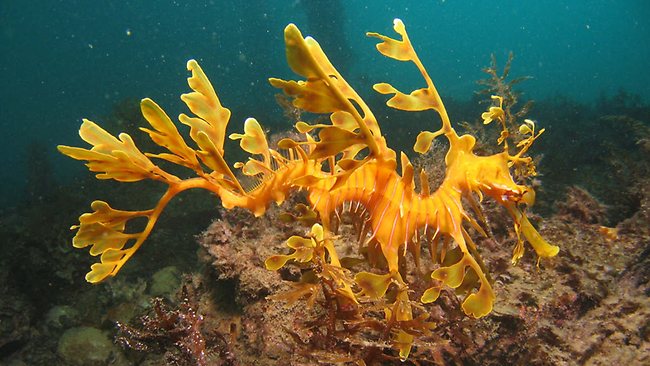THE Great Barrier Reef is a world-renowned dive site, but it isn’t all we have to offer!
We take a look at some of the best dive locations across Australia, from north to south and east to west.
QUEENSLAND
LIZARD ISLAND
Lizard Island is not just one of Australia’s best dive locations, but is frequently listed as one of the top spots in the world. The national park is a great base for those keen to explore the northern part of the Great Barrier Reef. Cod Hole is a favourite dive spot (also suitable for beginners) in the famed coral wonderland.
What you’ll see: Much of these northern waters remain relatively untouched and you’re likely to see everything from manta rays, potato cods and White Tip reef sharks, to giant clams and feather stars.
Best time to go: There is no real bad time of year to visit the Great Barrier Reef with Queensland’s warm waters making it ideal for year-round diving. Nevertheless, the best weather is usually between August and January.
HERON ISLAND
Situated at the southern end of the Great Barrier Reef, World-Heritage listed Heron Island is one of Queensland’s best dive sites. It’s also the most accessible, making it a great place to learn how to dive. A 15-minute ride out from the jetty and you’ll have some 30 dive sites to pick from. The Coral Cascades, Heron Bommie and the Blue Pools are some of the most popular sites.
What you’ll see: Wobbegong sharks, parrotfish, Moray eels, octopus, turtles, anemones and stunning Staghorn Coral banks, overhangs and tunnels.
Best time to go: All year, but visibility is best from July – September
YONGALA SHIPWRECK
The Yongala sank during a cyclone in 1911, killing 122 people, a racehorse and a bull. But a century later, the ship is once again budding with life, albeit under the sea. Sitting 90km southeast of Townsville, the enchanted shipwreck is listed as one of the top ten dive sites in the world.
What you’ll see: A multitude of marine life has converted this wreck into a mansion and you’re likely to catch a glimpse of several different species. As one traveller described it: “[It’s] just awesome. Corals are so bright, and all the fish look like they’ve been on steroids. It is like a bustling city down there, only the inhabitants are fish, sharks, turtles, clown fish, eels, snakes everywhere, potato cod, you name it, it is there.”
Best time to go: Winter months tend to offer sightings of humpback whales, manta rays and visibility is generally better, though water temperature is cooler. Meanwhile, in summer you’re more likely to see brightly-coloured schools of bait fish.
WESTERN AUSTRALIA
NINGALOO REEF
Not to be outdone by the east, the West Coast has plenty to offer with the beautiful Ningaloo Reef – a fringing coral reef stretching 260km along the Northwest Cape halfway up Western Australia.
What you’ll see: Ningaloo Reef is home to the largest fish in the world – the Whale Shark, but Humpback whales, manta rays, Loggerhead and Hawksbill turtles can all also be spotted. There are over 250 different species of coral and more than 500 types of wildlife.
Best time to go: If a mammoth 18m-long whale shark is what you’re hoping to see, the best time to visit is from March to June, when, in search of food, plankton-rich waters pull them closer to the reef.
CHRISTMAS ISLAND
Christmas Island tends to be known for things other than its amazing diving spots, which makes it somewhat of an undiscovered treasure. The small territory in the Indian Ocean actually boasts a magical selection of marine life. With elaborate cliffs and caves it’s a great destination for wall diving.
The island itself is the tip of an ancient volcanic mountain rising some 3km out of the ocean floor. With visibility often as good as 50m, divers can gaze at the collection of coral that plunge into an apparent bottomless abyss.
What you’ll see: The deep water around the island attracts the likes of tuna, trevally and white tip reef sharks. It’s worth spending some time on the shoreline too if you’re around in October/November. Some 120 million red crabs begin a spectacular migration toward the sea to release their eggs.
Best time to go: Avoid diving from December to April when the wet season hits on the back of monsoons from the north-west.
NEW SOUTH WALES
BYRON BAY
The warmer tropical waters of the north meet the cooler climate of the south leaving an interesting mix of marine life here in Byron Bay. Julian Rocks, a pair of small islands surrounded by marine park, is the top dive site nearby and a great place for divers to learn the ropes.
What you’ll see: Leopard sharks, grey nurses, humpbacks and wobbegongs inhabit the local area, as well as sea turtles, sea stars, manta rays and plenty of colourful coral and sponges!
Best time to go: Leopard sharks come out to play mid-summer when it’s nice and warm. Meanwhile, you can hear the humpback whales sing as they make their annual migration if your underwater from May through to September.
LORD HOWE ISLAND
Home to more than 60 dive sites, simply stroll out from the beach to experience the island’s beautiful coral reef. A five-minute boat ride to Erscotts Hole offers plenty of fish life and can be experiences in nearly all weather conditions. The island is best known for its consistently excellent visibility, making it ideal for underwater photography.
What you’ll see: Large numbers are Bluefish, Double Header Wrasse, Spangled Emperors and Neon Damsels. Rare species such as Colemans Pigmy Seahorse, Fosters Hawkfish and Marlin Spike Auger shells can be found at Escortts Hole.
Best time to go: Water temperatures in summer can range from 22-26 degrees with an average of 25-30m visibility.
SOUTH AUSTRALIA
Kangaroo Island
The cooler waters surrounding Kangaroo Island offer a completely different form of marine life to that up north and the leafy sea dragon is the big drawcard. These beautiful creatures a relatives of the seahorse and only live in southern and western Australian water.
What you’ll see: The Leafy Sea Dragon, seals and walls of Gorgonia corals and red, orange and white sponges are quite a sight. Blue Devils, Harlequins, Truncate coralfish and Boarfish also frequent these southern waters, which is dotted with several different shipwrecks.
Best time to go: April through June are the best times to dive here.
NORTHERN TERRITORY
Usat Meigs
Wreck diving is the go in the Northern Territory, with many sunken ships lying not far of the north coast. Usat Meigs is a favourite. The 131m long USA transport ship sank during the first Japanese air raid against the Australia mainland in World War II. Now resting comfortable at a depth of 18m, it’s considered Darwin’s greatest wreck site.
What you’ll see: The Usat Meigs has become the happy home to many different species of fish, including pygmy barracudas, golden snapper and large estuarine cod.
Best time to go: The best time to dive is in the dry winter months when visibility is at its best. During the summer monsoons, cyclones, heavy rains and box jellyfish (which are particularly deadly!) are likely to ruin your experience.
TASMANIA
SS Nord
This 88m long cargo steamer sunk in 1915, after hitting a sunken pinnacle near Hippolyte Rock. It’s one of Tasmania’s few intact (you can still make out it’s a ship) shipwrecks and is rated Australia’s second-best wreck dive after the SS Yongala. Sitting 42m deep, it’s strictly for experienced divers only.
What you’ll see: The wreck has attracted a variety of fish and is covered in colourful marine growth. You can still see a number of artefacts too, including brass fittings and Chinese crockery.
Best time to go: The site is exposed to southerly and easterly weather and can be prone to currents – so check ahead.



